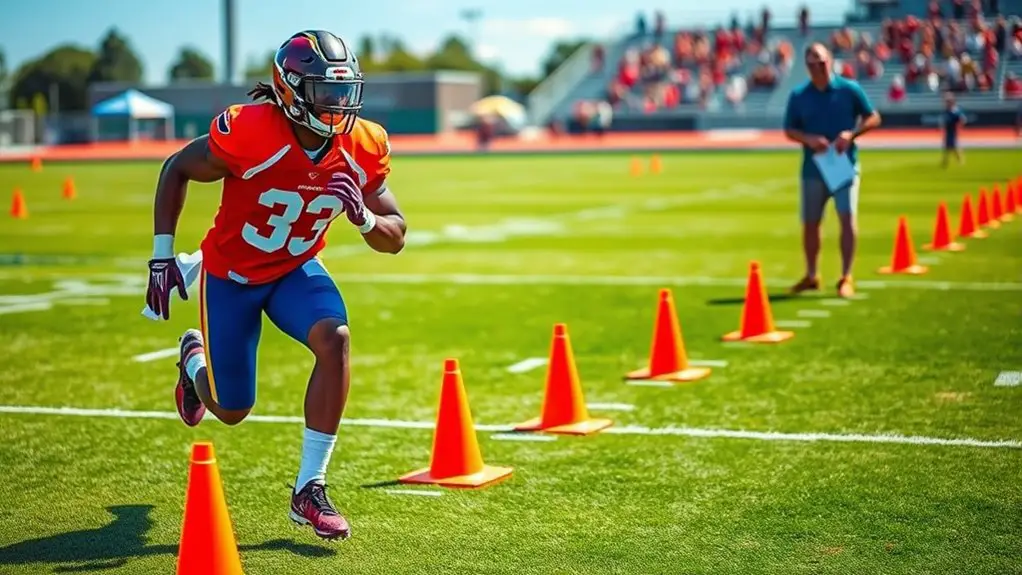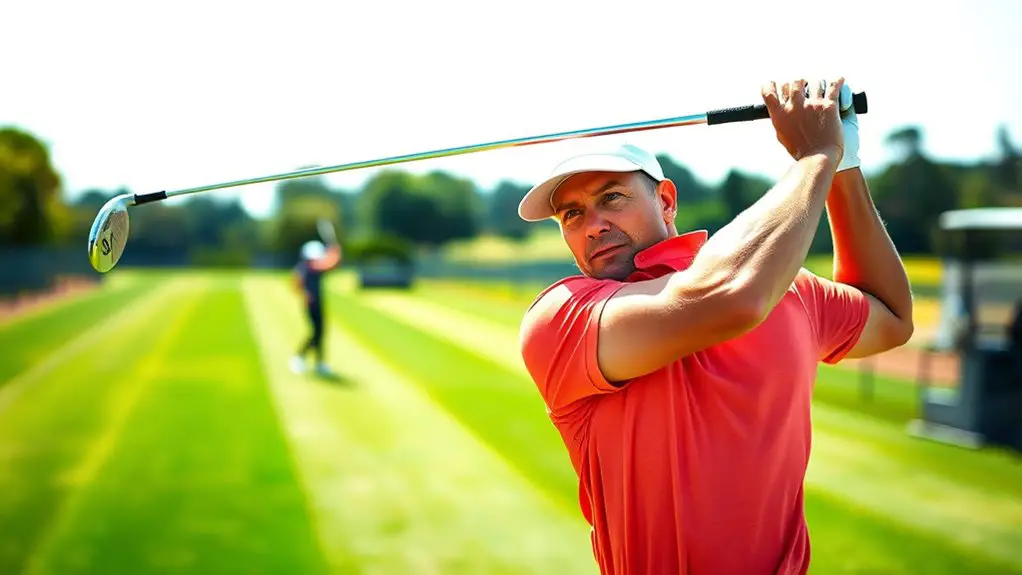Agility training is essential for tennis players like you. It boosts your ability to change direction quickly, improves coordination, and enhances your overall performance on the court. Incorporating drills like ladder exercises and cone sprints can elevate your footwork and reaction time. Plus, agility training helps prevent injuries, promoting longevity in the sport. If you want to discover specific drills and tips to integrate agility into your routine, there's more valuable information to explore.
Understanding Agility in Tennis
Agility is essential for tennis players, as it embodies the ability to move quickly and effectively on the court. You need to change direction swiftly, respond to your opponent's shots, and position yourself perfectly for every play. This freedom of movement lets you express your style and strategy without being confined by limitations. Enhancing your agility means you'll be able to dart across the court, getting to balls that others might miss. It's about feeling light on your feet and ready for anything, allowing you to release your full potential. Remember, agility isn't just for show; it's a crucial part of your game that can lead to more victories and a true sense of liberation on the court.
Key Benefits of Agility Training
While many aspects of tennis contribute to overall performance, agility training offers unique advantages that can markedly elevate your game. First off, it improves your ability to change direction quickly, helping you reach those tricky shots with ease. You'll find yourself moving fluidly across the court, dodging opponents and making those vital plays. Plus, agility training enhances your coordination, ensuring your footwork syncs beautifully with your racket skills. This not only boosts your confidence but also gives you the freedom to express your playing style. Additionally, better agility can reduce the risk of injury, allowing you to enjoy the sport longer. Ultimately, embracing agility training can transform your game, giving you the edge you need to succeed on the court.
Essential Agility Drills for Tennis Players
To truly harness the benefits of agility training, incorporating specific drills into your routine is key. These exercises can elevate your game and keep you feeling free on the court. Here are some essential drills to contemplate:
| Drill Name | Description |
|---|---|
| Ladder Drills | Use an agility ladder to enhance foot speed and coordination. |
| Cone Sprints | Set up cones and sprint between them to improve quick directional changes. |
| Side Shuffles | Shuffle side-to-side to build lateral movement and balance. |
Integrating these drills helps you develop a quick reaction time and agile movements, empowering you to chase down every ball. Embrace the freedom agility brings, and watch your performance soar!
Incorporating Agility Training Into Your Routine
How can you seamlessly weave agility training into your tennis routine? Start by dedicating a few minutes each practice to agility drills. You can incorporate ladder drills or cone sprints during your warm-up. These short bursts of focused activity not only enhance your footwork but also keep your energy up. Consider pairing agility exercises with your regular drills; for instance, alternate between hitting balls and performing lateral shuffles. This keeps things fresh and dynamic. You might also schedule specific agility sessions on days when you're not playing matches. Prioritize variety in your approach, making it enjoyable and freeing. Remember, the key is to blend agility work naturally into what you love about tennis, so it feels less like a chore and more like a game.
Measuring Progress and Setting Goals
As you commence your agility training journey, measuring progress and setting clear goals becomes essential for improvement. Start by identifying specific areas you want to enhance, like speed, reaction time, or footwork. Use a stopwatch or video recordings to track your performance over time. This not only keeps you accountable but also shows how far you've come.
Set short-term goals, like completing a drill faster, and long-term goals, such as mastering a specific technique. Celebrate your achievements, no matter how small, to stay motivated. Remember, agility training isn't just about physical skills; it's about gaining the freedom to move confidently on the court. Embrace the process, adapt as needed, and watch your game elevate to new heights.
Frequently Asked Questions
How Often Should Tennis Players Do Agility Training?
You should aim for agility training at least two to three times a week. Consistency is key, and balancing it with other workouts guarantees you stay free and flexible on the court without overdoing it.
Can Agility Training Reduce the Risk of Injuries?
Yes, agility training can notably reduce your risk of injuries. By enhancing your coordination and balance, you'll improve your body's ability to respond to sudden movements, helping you stay injury-free and enjoy your activities more.
What Age Is Best to Start Agility Training for Tennis?
Like a bird taking flight, you'll find the best age to start agility training is around 6 to 8 years old. Your body's still developing, allowing you to embrace movement and freedom on the court!
Are There Specific Agility Exercises for Doubles Players?
You can incorporate ladder drills, cone sprints, and partner shadowing to enhance your agility as a doubles player. These exercises will improve your quickness and coordination, giving you the freedom to dominate the court.
How Does Agility Training Differ From Speed Training?
When you think about agility and speed training, they're intertwined yet distinct. Agility focuses on quick direction changes while speed emphasizes straight-line velocity. Both enhance performance, but each targets different movement aspects essential for athletic success.




